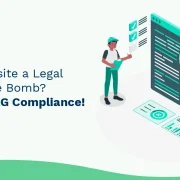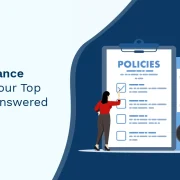
How to Improve Training Completion Rates with LMS?
An increasing number of organizations today are investing a lot of money and effort to provide the best training to their employees to benefit both the employees and the organization as a whole. However, the industry average for online course completion rates in most organizations is still very low, with even free MOOCs (Massive Open Online Courses) experiencing high training dropout rates.
Since assessing the number of people completing your training courses and programs is one of the best ways to measure learning engagement, poor training completion rates eventually translate to the slow career growth of employees, affecting the company’s bottom line.
Table of Contents:
- Wondering How to Deal with This?
- Help Learners Understand the Purpose of the Training
- Send Training Updates Regularly
- Ensure Clear and Detailed Course Descriptions
- Offer Quick Response and Support to Learners
- Recognize and Reward Learners Who Finish Courses
- Keep Courses Short and Precise
- Leverage Mobile Compatibility
Wondering How to Deal with This?
A good learning management system (LMS) is a one-stop solution to all your training needs. It helps you track everything from how many learners are accessing the course, how many have completed the assigned training, how many left the training mid-way, and which courses are accessed or viewed the most.
To this end, this blog will discuss how you can use an LMS to improve your training completion rates.
Help Learners Understand the Purpose of the Training
When it comes to low completion rates of training, one of the main causes is the lack of clarity among learners on the purpose of training.
To address this, the right LMS can be instrumental as it helps you define learning paths and objectives when creating training courses.
To be able to tell your learners about the benefits of taking courses and encourage them to complete them, it is important to assess their current skill level/competency and where you want them to reach.
This must be followed by determining the necessary skills and ensuring that there are specific learning paths and courses designed to improve the targeted skill sets you wish your learners to gain.
Send Training Updates Regularly
In an organizational setup, employees deal with strict deadlines and targets on an everyday basis. This makes it difficult for them to keep track of scheduled or assigned training and log in on a hectic working day.
Choosing an appropriate LMS can be of great help here as it allows you to send all learning updates to such employees regularly to keep them updated and informed about their training status.
You can also involve direct supervisors to help you organize the training and effectively manage learners’ time, which helps improve the overall training rate.
Ensure Clear and Detailed Course Descriptions
One of the most important aspects to ensure high course completion rates is clear, detailed, and comprehensive descriptions for each training or course.
For instance, the course description should provide the users with all the important information, including the length or completion time estimate of the training, so that learners can plan their schedule accordingly.
Likewise, it should have a clear outline offering an overview of the training course highlighting all the key points and takeaways.
Details such as specific technical requirements (software/device access requirements) and qualifications must also be provided to give learners enough clarity on how they will be incentivized or rewarded after completing the course and having learned the relevant skills.
Also Read: LMS or Learning Experience Platform (LXP) – What’s Best for Your Training Needs
Offer Quick Response and Support to Learners
Offering a quick response to the learners’ queries, clarifying their questions, and offering them support with various technical issues play a crucial role in improving training completion rates.
When attempting to complete a training program, learners may have a range of issues with their login process, username, password, Internet connection/accessibility, etc. Even a minor delay in response to these issues can inconvenience learners, leading to a loss of interest and incomplete training.
Having a good LMS helps address this challenge by providing quick responses and support to employees and clarifying all their queries. Access to 24/7 support ensures that they can happily proceed with the assigned training.
Recognize and Reward Learners Who Finish Courses
One thing that can significantly increase online course completion rates is a sense of accomplishment.
For instance, completing a course and sharing their certificate on social platforms imbues learners with a sense of doing something meaningful for their career growth.
Using a good LMS allows you to recognize and reward your learners. Since learners are also motivated by how their peers are doing and progressing, you can use the leaderboard feature of the LMS to track and build the pace and momentum for the entire cohort.
Apart from this, you can also consider bestowing appropriate rewards and recognition for reaching the top of the leaderboards, such as an extra day off, meal vouchers, or a special training opportunity.
Keep Courses Short and Precise
Lengthy or text-heavy content can be easily tiring and distracting for learners and increase the chances of them leaving the course midway.
Making the courses short, precise, and knowledge-focused is an excellent way to avoid this. The micro-learning approach works best here as it allows you to split lengthy content into bite-sized modules for easy understanding and better retention.
A good LMS also allows you to integrate short videos, detailed infographics, animations, and more into your courses to help learners maintain focus and retain maximum information.
Besides, you can punctuate your courses better with milestones, rewards, or points. For instance, when they reach a particular milestone, you can implement gamification into your content to help increase engagement and encourage course completion.
Leverage Mobile Compatibility
A good LMS helps provide a responsive design that is intuitive, visually clear, and accessible to the users based on the device it is viewed.
Apart from the content being mobile-responsive, pages need to load faster, videos should work well, and all the links should be accurate.
To improve course completion rates, use your LMS to offer the same kind of user experience on smart or mobile phones as in a browser. The LMS should take into account the various range of devices learners use and their screen sizes.
This is important because most learners might prefer a mobile device to access or complete training courses due to various reasons. For instance, the phone route is more convenient if they are working away from the office or traveling and don’t have access to their desktop/computer.
Such situations should not limit the learner from accessing the course. Device compatibility allows them to continue from where they left off and significantly improves the course completion rates.
Also Read: 9 Best LMS Options to Enable Online Course Creation for Your Employees
To Conclude
An LMS is a great tool to help you make the most of your online courses, resources, and content. Apart from hosting all your training material in one single place, it also helps you manage your training completion rates much better.
A cloud-hosted platform, the Hurix Digital LMS comes with a range of customizable features and support services and can be instrumental in ensuring high training completion rates for your employees.
Contact us today to learn more about Hurix Digital.









